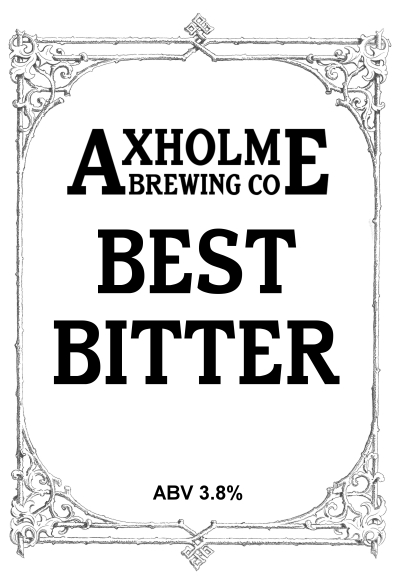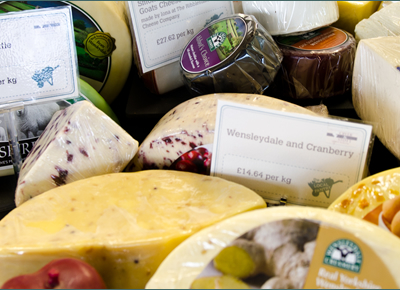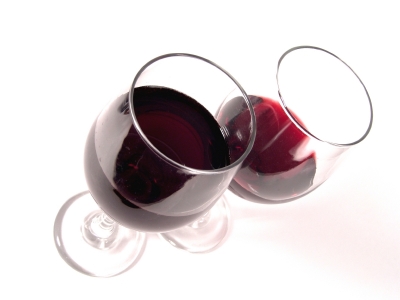
Axholme Brewing Company - Traditional Ales
- Details
- Category: Food & Drink
- Created on Saturday, 30 August 2014 15:07
- Written by Northern Living
 Axholme Brewing Company was set up in early 2012 by husband and wife team Mike & Jules Richards. We are commited to craft brewing, creating small batches so we can put as much care as possible into every cask, and create a wide range of interesting beers. Our goal is to introduce a core range of top quality beers in classic styles, along with a wide range of guest ales exploring both modern and historic beer styles. Along with our cask range our beers are also bottled so that they can be enjoyed at home. The Isle of Axholme is a beautiful area of rural North Lincolnshire (and a bit of North Nottinghamshire). Prior to the area being drained by Dutchman Cornelius Vermuyden in the 17th Century, the area was very marshy, and the rivers Don, Idle and Trent formed an inland island (although the Don has since been diverted). The drainage left rich, very flat farmland to the North of the Isle. The three small towns in the Isle are Epworth, Crowle and Haxey. Epworth is famously the birthplace of John and Charles Wesley and the whole area enjoys a rich history.
Axholme Brewing Company was set up in early 2012 by husband and wife team Mike & Jules Richards. We are commited to craft brewing, creating small batches so we can put as much care as possible into every cask, and create a wide range of interesting beers. Our goal is to introduce a core range of top quality beers in classic styles, along with a wide range of guest ales exploring both modern and historic beer styles. Along with our cask range our beers are also bottled so that they can be enjoyed at home. The Isle of Axholme is a beautiful area of rural North Lincolnshire (and a bit of North Nottinghamshire). Prior to the area being drained by Dutchman Cornelius Vermuyden in the 17th Century, the area was very marshy, and the rivers Don, Idle and Trent formed an inland island (although the Don has since been diverted). The drainage left rich, very flat farmland to the North of the Isle. The three small towns in the Isle are Epworth, Crowle and Haxey. Epworth is famously the birthplace of John and Charles Wesley and the whole area enjoys a rich history.
The brewing process starts when we mix milled malted barley with hot water to create a mash (in the Mash Tun). This is essentially a giant porridge held at a temperature of 65 C for an hour or so. This causes the enzymes naturally present in the malt to convert the malt starches into simple sugars that can be fermented. After this the liquid - now called wort - is strained from the solids and the mash is rinsed through to remove residual sugars. This is called sparging. The wort is collected in the Copper. In the copper the wort is heated to boiling point and the first load of hops - the bittering hops - are added. These hops do not contribute to the flavour of the beer as the aromatic oils are evaporated during the boiling, but the boil isomerises the alpha-acids within the hops creating bitterness. The wort is boiled for an hour, which coagulates the malt proteins, deactivates the malt enzymes and sterilises the wort. At the end of the boil the heat is turned off and the second load of hops is added - the aroma hops. These are not boiled and so they do not contribute much to bitterness but the essential oils in the hops are released into the wort adding flavour. They stand in the copper for half an hour before the next stage. Then the wort is passed through a heat exchanger, cooling the wort down to 17 C and heating up water for the following days brew. The wort flows into one of our fermenting vessels. When collection is completed the levels of sugar are measured using a saccharometer and if they are too high for the beer being created water is added to the copper (also rinsing wort out of the aroma hops) - this is a hop sparge. When the sugar levels - or gravity - are right the yeast can be added. Over the next four or five days the yeast will metabolise the sugars in the wort into carbon dioxide and alcohol. We can measure the progress of the fermentation by measuring the decreasing gravity on the saccharometers. When the beer - as it now is - is fermented cooling coils in the fermenting vessel jacket activate, cooling the beer down to about 10 C. This halts further yeast activity and causes much of the yeast to sediment out. Now the beer can be transferred into casks, along with a finings agent to clear the beer in the cask, where it undergoes conditioning as it heads to a pub cellar and ultimately, your glass.
Axholme Brewing Company
2 Garthorpe Road
Luddington
North Lincolnshire
DN17 4QT
www.axholmebrewing.co.uk
(flike}
The Local Pantry & Café - Leathley near Otley
- Details
- Category: Food & Drink
- Created on Thursday, 28 August 2014 15:56
- Written by Northern Living
 We're a local family who took over the shop at the site of the old Hunters Garage in 2011. We chose it because it's easy to get to on the main A658 to Harrogate and close to the local communities of Pool, Huby, Leathley and only 10 minutes from Bramhope, Otley or Leeds Bradford airport.
We're a local family who took over the shop at the site of the old Hunters Garage in 2011. We chose it because it's easy to get to on the main A658 to Harrogate and close to the local communities of Pool, Huby, Leathley and only 10 minutes from Bramhope, Otley or Leeds Bradford airport.
It still looks like a Petrol Station from the outside but inside we've modernised everything to today's standards and put in a brand new shop, kitchen and café. We've kept the large windows with the stunning views of the Chevin and surrounding fields. Nature has even provided a pond beside us for the ducks and birds to enjoy.
We've got three clear objectives
To offer you the best local food from local farmers and producers to buy, eat in the café or cook at home.
To provide local farmers and producers another outlet alongside their own farm shops or farmers markets.
To support the local community, the rural economy and the environment providing a meeting place for local family and friends while promoting the best of Yorkshire to the many passing tourists.
Suzannah our family director and manager is a self confessed foodie. She loves her cheese. Ask her for her favourites. All our cheese is supplied by cheesemongers Cryer and Stott. Try the Fountains Gold, Traditional Wensleydale, Ribblesdale or Smoked Ribblesdale goat's cheese, Richard III, Shepherd's Purse Yorkshire Blue and Yorkshire Fettle or Yorkshire Brie. On the deli counter you'll also find Award winning Kendall's pork pies, Red Tractor luxury scotch eggs and ARE Olives range of Olives.
The Local Pantry Shop & Café,
Harrogate Road,
Leathley near Pool,
Otley.
West Yorkshire
LS21 2PS
www.thelocalpantry.co.uk
Slow Roast Pork Shoulder
- Details
- Category: Food & Drink
- Created on Tuesday, 26 August 2014 09:30
- Written by Northern Living
 A couple of years ago I had the opportunity to be a butchers hand . That's the chap in the back who does all the stuff you, the customer, probably doesn't want to see. There's nothing sinister going on behind the chains, often just a lot of sausage making and a few bawdy jokes.... Anyway, it occurred to me that although we got through a vast amount of pork shoulder for sausages, we never put it out on the counter. I asked why and Geoff the head man at the time simply said “Who'd want to cook it for hours?” Which seemed a little odd to me as a rescued Edwardian recipe we'd modified for slow roast pork shoulder with quince jelly was flying out of the door at a restaurant I assisted at, just round the corner.
A couple of years ago I had the opportunity to be a butchers hand . That's the chap in the back who does all the stuff you, the customer, probably doesn't want to see. There's nothing sinister going on behind the chains, often just a lot of sausage making and a few bawdy jokes.... Anyway, it occurred to me that although we got through a vast amount of pork shoulder for sausages, we never put it out on the counter. I asked why and Geoff the head man at the time simply said “Who'd want to cook it for hours?” Which seemed a little odd to me as a rescued Edwardian recipe we'd modified for slow roast pork shoulder with quince jelly was flying out of the door at a restaurant I assisted at, just round the corner.
The truth is, although it's far from a popular cut these days shoulder if cooked right is probably the most tasty and rewarding cut of pork – oh and it's as cheap as chips! Your butcher might think you're a bit odd asking for it, but they'll certainly have plenty in if they make their own sausages.
So here's a slightly edited Jamie Oliver recipe for you:-
This is a proper old-school Sunday roast with crackling. Leaving the bone in adds a bit of extra flavour and having a layer of fat helps to keep the meat nice and moist as it roasts. This isn't the kind of joint you carve into neat slices. If you've cooked it right, it should pull apart into shreds with a couple of forks. If you're worried about scoring the crackling yourself, ask your butcher to do it for you, that's what he's there for.
Preheat your oven to 220°C/425°F/gas 7.
Place your pork on a clean work surface, skin-side up. Get yourself a small sharp knife and make scores about a centimetre apart through the skin into the fat, but not so deep that you cut into the meat. If the joint is tied, try not to cut through the string. Rub salt right into all the scores you've just made, pulling the skin apart a little if you need to. Brush any excess salt off the surface then turn it over. Season the underside of the meat with a few pinches of salt and pepper. Place your pork, skin-side up, in a roasting tray and pop in the preheated oven. Roast for 30 minutes, until the skin of the pork has started to puff up and you can see it turning into crackling. At this point, turn the heat down to 170°C/325°F/gas 3, cover the pork snugly with a double layer of tinfoil, pop back in the oven and roast for a further 4 and a half hours. Take out of the oven, take the foil off, and baste the meat with the fat in the bottom of the tray. Carefully lift the pork up and transfer to a chopping board. Spoon all but a couple of tablespoons of fat out (save it for roast potatoes!).
Add all the veg, garlic and bay leaves to the tray and stir them into the fat. Place the pork back on top of everything and return to the stove without the foil to roast for another hour. By this time the meat should be meltingly soft and tender. Carefully move the meat to a serving dish, cover again with tinfoil and leave to rest while you make your gravy. Spoon away any fat in the tray, then add the water or stock and place the tray on the hob. Bring to the boil and simmer for a few minutes, stirring constantly with a wooden spoon to scrape up all those lovely sticky tasty bits on the bottom of the tray. When you've got a nice, dark gravy, pour it through a sieve into a bowl or gravy boat, using your spoon to really push all the goodness of the veg through the sieve. Add a little more salt and pepper if it needs it. Serve the pork and crackling with your jug of gravy and some lovely roast potatoes (As a treat, you can try roasting them in the fat you spooned out of your roasting tray. Some stewed red cabbage and a dollop of apple sauce will finish this off perfectly.)
Easy Ham Penne
- Details
- Category: Food & Drink
- Created on Tuesday, 26 August 2014 06:11
- Written by Northern Living
 We appreciate that some of our recipes might best be though of as a treat. So this week all recipes will be designed for those on a budget. By selecting requests from various online groups we'll dedicate each recipe to an specific person. So this is for you N Dunkerley
We appreciate that some of our recipes might best be though of as a treat. So this week all recipes will be designed for those on a budget. By selecting requests from various online groups we'll dedicate each recipe to an specific person. So this is for you N Dunkerley
Prep time: 5 mins
Cook time: ½ hr
Serves: 4
Ingredients
300g pasta such as penne (Any shape will do really)
7 dollops of Mayonnaise
600ml water
125g ham
150g fat free Greek yoghurt
50g cheese (Parmesan or Emmental)
Method
Preheat the oven to 180°C.
Mix the water, the mayonnaise and the yoghurt together. Boil the mixture.
Put the pasta in the oven tray, cover with the ham and finally add the cheese.
Bake for 30 minutes in the oven.
Serve with a salad or your favourite vegetables.
Homemade Blackberry Wine
- Details
- Category: Food & Drink
- Created on Sunday, 24 August 2014 07:02
- Written by Northern Living
 The crop of blackberries is outstanding this year. If you're been out brambling and are thinking of making a little wine here's an interesting recipe.
The crop of blackberries is outstanding this year. If you're been out brambling and are thinking of making a little wine here's an interesting recipe.
A word of warming though... Blackberries contain an enzyme which causes the initial fermentation to be vigourous and prolonged. Be certain to sieve all seeds out – step 8 – if there are any left they have a tendency to block the air trap which can only result in one thing when it finally explodes out. A staining sticky foam on ceilings, walls and floors.
Blackberry Wine Recipe
Ingredients
780 grams blackberries
5 litres water
350 grams sugar or 1kg for a stronger wine
1 grams yeast
150 grams raisins (for a sweeter wine)
Method
1. Rub the berries very gently in a tea towel to remove any dust, but do not wash.
2. Place in a large bowl or bucket and pour over 5litres of boiling water.
3. Cover with a cloth and leave for three days stirring a few times each day.
4. Strain the liquid onto the sugar and stir until it has all dissolved.
5. Leave for half an hour.
6. Add the yeast and cover closely.
7. Leave in the container for a further six days.
8. Strain into a demijohn and add the raisins for a sweeter wine.
9. Fix in a bung and place in a warm room.
10. Leave until fermentation is complete.
This should be ready to drink in six months to bring warmth to a cold winter’s day.

